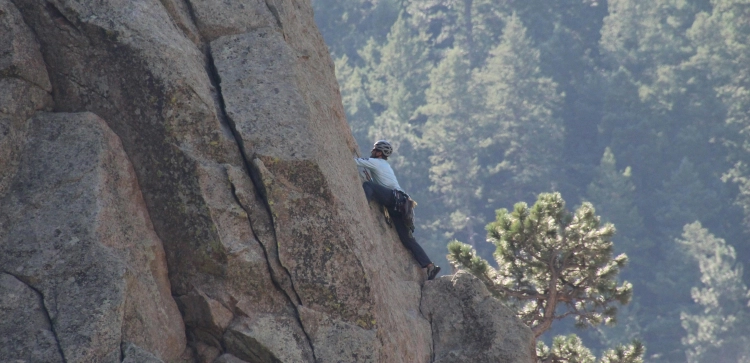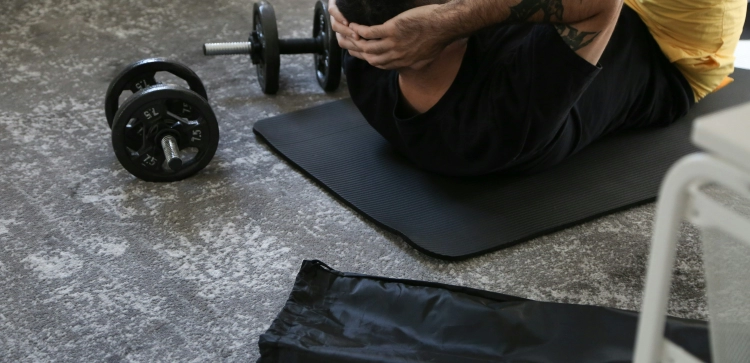A Deep Dive Into Navigating Various Rock Features

Climbing is a dynamic and multifaceted sport that challenges individuals to adapt their techniques to a diverse range of rock features. From the rugged faces of crags to the smooth surfaces of overhangs, each type of rock feature demands a nuanced approach. In this comprehensive guide, we'll delve into the intricacies of climbing on different rock features, exploring the characteristics of each and providing detailed techniques to navigate them successfully.
- Understanding Rock Features
- Crimps: Delicate Edges That Demand Precision
- Slopers: Embracing The Challenge Of Rounded Holds
- Jugs: Confidence-Boosting Large Holds
- Cracks: Mastering The Art Of Jamming
- Overhangs: Conquering The Challenge Of Inclined Surfaces
- Edges: Small Ledges That Test Precision
- Arete: Navigating The Intersection Of Rock Faces
- Smears: Utilizing Friction On Flat Surfaces
- Techniques For Climbing On Different Rock Features
- Body Positioning: The Art Of Balance And Stability
- Weight Distribution: Optimizing Grip And Preventing Fatigue
- Dynamic Movements: Adding Fluidity To Climbing Sequences
- Adapting Hand Positions: Optimizing Grip For Various Holds
- Utilizing Feet Effectively: The Foundation Of Stability
- Common Challenges And Solutions
- Slipping On Slopers: Enhancing Grip On Smooth Surfaces
- Jamming In Cracks: Conquering The Strenuous Challenge
- Overcoming Fear On Overhangs: Building Confidence In Vertical Spaces
- Conclusion: The Versatile Climber's Toolkit
Understanding Rock Features
Crimps: Delicate Edges that Demand Precision
Crimps, those small and often sharp edges on the rock, require climbers to employ a meticulous and controlled approach. These holds necessitate precise finger placement, engaging predominantly the fingertips. To navigate crimps effectively, climbers should focus on building finger strength through targeted exercises that enhance grip and endurance.
Slopers: Embracing the Challenge of Rounded Holds
Slopers, with their smooth and rounded surfaces, present a unique challenge. Climbers must rely on open-handed grips and body tension to secure these holds. Applying palm pressure strategically enhances friction, allowing climbers to gain grip on seemingly frictionless surfaces.
Jugs: Confidence-Boosting Large Holds
Jugs, large and comfortable holds, offer a welcome respite during climbs. Climbers can approach jugs with a relaxed grip and focus on maintaining efficient body positioning. These holds are ideal for quick and secure movements, providing opportunities to rest and regroup.
Cracks: Mastering the Art of Jamming
Cracks, gaps or fissures in the rock, demand specialized techniques known as crack climbing. Climbers use hand jams, finger locks, and fist jams to secure themselves within the crack. Adjusting body positioning based on the crack's width is crucial to navigating these challenging features.
Overhangs: Conquering the Challenge of Inclined Surfaces
Overhangs, sections of rock that incline away from the climber, require a combination of core strength and precise footwork. Climbers must maintain body tension to prevent swinging while planning efficient sequences to navigate overhangs successfully.
Edges: Small Ledges that Test Precision
Edges, small and defined ledges on the rock, demand accurate foot placement and leverage. Climbers should focus on using the edge for maximum support and develop strength in the calves and toes for added stability.
Arete: Navigating the Intersection of Rock Faces
The arete, where two rock faces meet, offers an intriguing challenge. Climbers must utilize both sides of the arete for holds, maintaining balance and employing opposing forces to prevent barn-dooring—a swinging motion away from the rock.
Smears: Utilizing Friction on Flat Surfaces
Smears involve using friction on flat rock surfaces with minimal features. Climbers must distribute weight evenly on their climbing shoes and develop sensitivity to feel the rock texture, maximizing friction for secure footing.
Techniques for Climbing on Different Rock Features
Body Positioning: The Art of Balance and Stability
Proper body positioning is paramount for navigating various rock features. Climbers should adjust their bodies to align with the specific rock feature, keeping their hips close to the wall and utilizing body tension effectively to maintain stability and control.
Weight Distribution: Optimizing Grip and Preventing Fatigue
Efficient weight distribution is crucial for preventing fatigue and maximizing grip on different holds. Climbers must analyze the rock feature and distribute their weight accordingly, avoiding overloading specific holds to ensure optimal balance.
Dynamic Movements: Adding Fluidity to Climbing Sequences
Dynamic movements play a vital role in climbing on different rock features, allowing climbers to reach distant holds or overcome obstacles. Practicing controlled dynamic movements, utilizing explosive power when necessary, enhances overall climbing fluidity.
Adapting Hand Positions: Optimizing Grip for Various Holds
Adapting hand positions is essential for optimizing grip on different holds. Climbers should learn various hand positions such as crimps, open-handed grips, and gastons, adapting their hand positioning based on the rock feature they encounter.
Utilizing Feet Effectively: The Foundation of Stability
Feet play a crucial role in climbing stability and propulsion. Climbers should pay close attention to foothold placement, developing precise footwork techniques for smears, edges, and cracks to enhance overall climbing performance.
Common Challenges and Solutions
Slipping on Slopers: Enhancing Grip on Smooth Surfaces
Slopers can be slippery, posing challenges for maintaining grip. Climbers can overcome this by increasing friction through the application of chalk to their hands. Emphasizing body tension and ensuring precise weight distribution aids in securing holds on slopers.
Jamming in Cracks: Conquering the Strenuous Challenge
Jamming in cracks can be strenuous and uncomfortable. Climbers can overcome this challenge by practicing different crack jamming techniques, using tape to protect their hands, and gradually building endurance for crack climbing.
Overcoming Fear on Overhangs: Building Confidence in Vertical Spaces
Overhangs can be intimidating, leading to fear of falling. Climbers can overcome this fear by gradually exposing themselves to overhangs, practicing falling in a controlled environment, and building confidence through repeated attempts.
Conclusion: The Versatile Climber's Toolkit
Mastering climbing on different rock features is not just a physical challenge but a journey of versatility and adaptability. Climbers who understand the characteristics of each rock feature and implement specific techniques into their climbing repertoire can confidently tackle a variety of routes. This comprehensive guide aims to equip climbers with the knowledge and skills needed to navigate the rich tapestry of rock features, fostering a deep appreciation for the artistry of climbing.
















